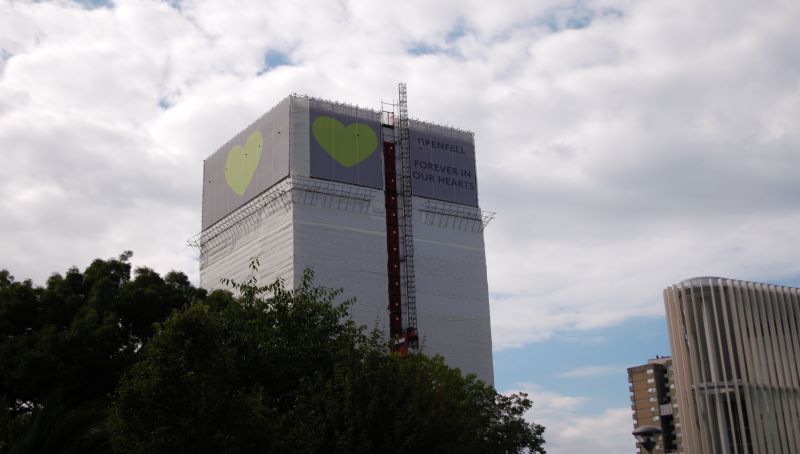
By Danielle Aumord
Government officials rejected calls to impose minimum standards of competency on fire risk assessors and guidance for disabled people was written minus their input (7–17 March 2022).
Government-endorsed guidance that said it was “usually unrealistic” to provide evacuation plans for disabled residents of blocks of flats was written without input from any disability rights experts or representatives of disabled people, said Louise Upton, former head of the fire safety policy team at the then-called Department for Communities and Local Government (DCLG).
Sir Ken Knight, the government’s chief fire and rescue advisor between 2007 and 2013, also gave evidence at the inquiry into the fatal tragedy. He was questioned about the decision not to impose higher standards on risk assessors in the aftermath of the deadly July 2009 fire at Lakanal House.
Fire safety rules introduced in 2005 created a new duty for building owners to carry out risk assessments of buildings containing multiple homes but set no requirements for the competency of those carrying out the assessments.
Sir Ken’s own report into the Lakanal House fire took note of this weakness and suggested that the legislation “be amended accordingly”. But emails revealed by the Grenfell Tower Inquiry revealed that the government rejected the calls to impose minimum standards of competency on the fire risk assessors because “businesses are unlikely to welcome the burden of further regulation”.
The public inquiry also heard that senior civil servant Brian Martin “ignored” a “red alert” warning about the “widespread, historic and ongoing” use of a highly combustible cladding product on UK high rises. Only 18-months before the blaze at Grenfell Tower, Mr Martin even explained to colleagues that the same product would go “whoosh” if exposed to fire.
He was responsible for official guidance on fire safety in buildings in the years before the Grenfell Tower fire and was considered to be a key person “to whom others would turn” for answers to questions about fire safety. Mr Martin held a pivotal position in the failure to amend or strengthen guidance.
He was also grilled about the failure to tighten a “dangerous and misleading” fire safety standard for cladding panels, Class 0, following a fire at Garnock Court in Irvine, Scotland in June 1999.
Class 0 is an old, out-of-date national product classification which is based on two old small-scale tests on individual products or materials (BS 476-6 and -7), which only deal with the spread of flames over the surface of a material or the surface of a composite product.
Notably, Class 0 and the BS 476 tests don’t measure the combustibility of a material or the combustibility of the core of a composite (or sandwich) material such as an aluminium composite material (ACM) cladding panel. As a result, combustible materials can achieve a Class 0 classification, and this is the reason there’s so much combustible ACM cladding on high-rise buildings in England.
At the time, Mr Martin held roles in two departments. He was employed by the Building Research Establishment (BRE), but he was also spending half his time on secondment at the government department responsible for building regulations, as part of the BRE’s contract to assist with a review of fire safety guidance.
Following the large cladding fire in 1999, Mr Martin was part of a team of researchers from the BRE sent to investigate the cause of the blaze, the inquiry heard.
In September 1999, he even co-authored a report for North Ayrshire Council, which made several references to the Class 0 standard. Class 0 was the required standard at the time for glass-reinforced plastic panels that had been installed beneath windows at the tower and had spread fire up the building.
The report said that when the building was remediated “we suggest non-combustible materials are chosen wherever possible”.
When he was questioned about what he remembered about the material used on Garnock Court, Mr Martin described it as “very low tech” and said that “obviously something that was likely to become involved in a fire and result in fire spread”.
He compared it to the material a “boy scout might use to make a canoe” and when asked what he had learned from investigations of the fire at Garnock Court, he said: “Don’t use combustible cladding, I suppose, in very simple terms.”





